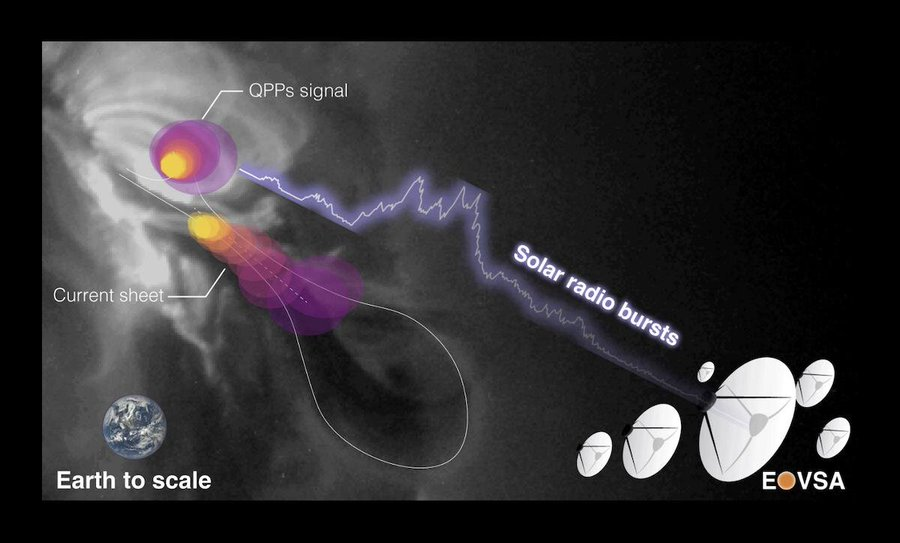Mysterious origin found for 'heartbeat-like' radio bursts from the Sun

Astronomers have located the source of a mysterious burst of radio waves from the sun with a signal pattern similar to that of a "heartbeat," a discovery that sheds better light on the underlying process of solar flares.
The study, published in the journal Nature Communications, revealed the location of the source of the radio signal coming from a solar flare more than 5,000 kilometers above the sun's surface.

An international team of scientists led by a team from the New Jersey Institute of Technology (NJIT) in the US says the new findings could help better understand the physical processes behind the energy release from solar flares.
"This pulsating pattern is important for understanding how energy is released and dissipated in the sun's atmosphere during these incredibly powerful explosions on the sun," Seiji Yu, an astronomer at the New Jersey Institute of Technology (NJIT) and co-author of the study, said in a statement.
"However, the origin of these repeating patterns, which are also called quasi-periodic pulses (QPP), has long been a mystery and a source of controversy among solar physicists," he added.
Scientists made the discovery using data from a solar flare event on July 13, 2017 captured by the New Jersey Institute of Technology's Owens Valley Extended Solar Array (EOVSA) radio telescope in California.
Scientists explained that the telescope observes the sun in a wide range of frequencies and is sensitive to radio radiation emitted by high-energy electrons in the sun's atmosphere, which are activated in solar flares.
From EOVSA observations, scientists found radio bursts with a signal pattern that repeated every 10-20 seconds "like a heartbeat," according to the study's lead author Yuankun Kuo.
They found strong pulsations in a region on the sun extending more than 25,000 kilometers across the core region of the solar flare eruption.

Scientists say this region is where magnetic field lines come close to each other, break off and reconnect, generating the intense energy that fuels the glow.
While such repetitive patterns are not uncommon for solar radio bursts, the scientists say they were surprised to find another source of the signals.
Scientists can then measure the energy spectrum of the electrons in the two radio sources at this event.
They found that these signals originate from magnetic islands, or bubble-like structures on the sun, that move almost periodically toward the blazing region.
The study revealed that the cyclic process leads to the repeated production of high-energy electrons, resulting in different types of radiation.
The findings, according to the scientists, shed more light on the process that drives outburst events in the sun.
Source : websites

